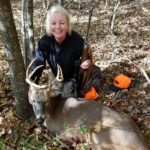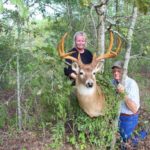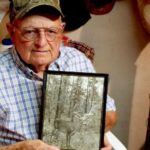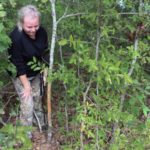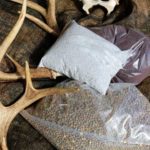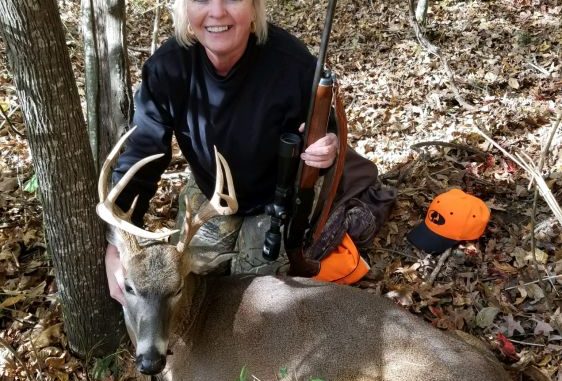
Wall hangers don’t just show up these days — they grow up. And this North Louisiana hunter shares some tips on how you can cash in this season.
The past several seasons, big buck contests and social media posts have exploded with impressive photos of true trophy bucks, more than most anyone can remember in the recent past.
So what’s the reason for this increase of big deer? Ask a dozen hunters and you’ll probably get a dozen answers. Is it better food plots? Are more hunters passing up shots on younger bucks? Is it better land use? Are hunters smarter? Or are they sharing their success in a more open and timely manner?
It’s probably all of the above — and a little more.
The female perspective
One North Louisiana hunter has quietly observed all sides of the trophy deer hunting game — and thinks she knows the reason.
That’s right — she.
Pam Streeter Garrett of Sterlington believes women are often portrayed as shopping, TV-watching home chefs who enjoy cuddly animals.
She’s the same way — but she enjoys shopping for hunting gear, watching deer hunting videos, cooking up tasty venison and mounting big deer heads.
“I’m just glad to see that you are asking a woman about her perspective on trophy deer hunting,” Garrett said. “There are a lot of women who are really good hunters, and the number is growing every day. And more of us are focusing on big deer, not just any deer that walks by.
“I am blessed to have hunted with a rifle and bow since I was old enough to go with my daddy. I’ve walked in his footsteps and patterned my hunting ways, secrets and knowledge after him. I’ve done the same with my husband, and now I enjoy being able to pass that on to others.”
The Streeter family legacy started with Pam’s pawpaw, Bill Streeter, more than a century ago. There weren’t many deer in 1910 when then 20-year-old Papaw Bill loaded up with the men and went meat hunting. They had to load everything from guns, ammo, food and tents on a mule — the kind you fed hay to — and walk back in the swamp to even find a deer.
One day he found the buck of a lifetime: a 14-pointer that weighed well over 280 pounds and was officially scored at 174 7/8 inches. He shot it with a Winchester 32-gauge single-barrel. It was so huge they had to pack it out on the mule, and its head touched the ground on one side and its back feet touched on the other. As the story goes, the mule even balked a few times and regularly turned around to bite the deer and get it off its back. They didn’t mount bucks in those days, but the antlers have been preserved, and are now on a huge deer head.
Understanding big bucks
But deer like that don’t just show up these days. With land use changes and pressure of all sorts, it takes serious management to even come close to that kind of specimen.
“I grew up with the knowledge of aging whitetails and understanding their patterns for eating, sleeping and rut. I’ve tracked deer habits to determine stand placement based on the type of terrain and overall deer movement and habitat. A big buck is more complicated, therefore he makes you work smarter for success,” she said. ‘Big buck’ means different things to different hunters, and I’ve learned over the years it’s the journey that makes it worthwhile.”
For the record, Pam’s dad is Wesley Streeter Sr., a pioneer in wild game taxidermy going back to the 1950s. Growing up, she worked alongside him in his shop north of Bastrop mounting everything from big whitetails, mule deer, elk, caribou, bear and exotics to both fresh and saltwater fish. And she went alongside him in the woods where he regularly pursued his passion — hunting.
Pam grew up seeing hunters shoot deer with small antlers just because that was all they had back in the 70s and 80s. Now, she sees lots of bigger deer in the taxidermy shop — and she knows what people are doing to make “big bucks.”
Let smaller deer walk
“Without a doubt, the biggest change in our whole region is the fact that people are learning more about bucks, learning to look at their antlers and body type — and now know the difference between young bucks and mature bucks,” she said. “The top thing that you can do to produce bigger bucks is to let those smaller ones walk. It isn’t easy, but it is rewarding.”
Managing property for bigger bucks, from habitat to supplemental food supplies, is also important. And the more land that you can manage correctly the better. Hunting clubs and landowners are working together to provide larger land tracts all following the same management principles. That includes harvesting does and scrub bucks to keep the herds and the habitat healthy.
Knowing what to look for in the woods is critical, also. Some big bucks will show up on camera, but others won’t venture far away from their safe zones except in the peak of the rut. Learning to scout the woods and find rubs and scrapes and even small signs, like broken limbs where bucks rub their antlers, are all key to taking mature deer.
Pam is primarily a gun hunter, shooting a Remington .308 with a Nikon Prostaff 4-12 x 40 BDC and 150-grain Remington bullets. But she also is learning how to shoot a bow and arrow, and is looking forward to taking a really big buck during archery season soon.
The first few cool days of fall have her excited about the upcoming season. That hasn’t been hurt by the fact that she’s seen numerous bucks on her game cameras, including some young up-and-comers that she calls her “investment for the future” bucks — and at least one nice 10-point that she’s ready to cash in on now if the opportunity presents itself.
If she does bring a big one down, it will continue the three-generation, 100-year cycle of a family member shooting a wallhanger. She, her husband and her dad have also harvested numerous double-digit deer, and mounted more of those than she can count. You can definitely say she knows how to ‘make the big bucks.’
Big threats to big bucks
Even with the best management efforts, the list of serious threats to big bucks is growing. The risk of chronic wasting disease looms on the horizon. Wild feral hogs are reaching critical numbers as a habitat menace. The re-establishment of black bear populations has reached nuisance level in some prime deer zones. And while incidents are down, outlaw hunters who don’t follow the rules are always a cause for alarm.
Deer have antlers … Cars have horns
Deer hunters often talk about “horns” on a big deer. But deer don’t have horns — cars have horns and deer have antlers.
Antlers are often called horns by some deer hunters, but they are not. Sheep, goats and cows have horns, formed by hair-like tissue that grows over a bony core. Horns are typically not shed, and can reveal the age of an animal by counting the annual growth rings inside.
But deer antlers are a bone growth, made up primarily of calcium and phosphorous.
They are deciduous, which means they are shed each year and grow back the next.
A lasting legacy
The Streeter legacy of preserving wildlife has gone public. Wesley Streeter Sr., donated his personal collection to the Chemin-A-Haut State Park in Morehouse Parish near his hometown. That means a wide variety of people have the chance to see Louisiana’s rich diversity of wildlife up close, thanks to the generosity of this long-time hunter and sportsman.
Approximately 30 mounts are on display in protected areas throughout the park. Some items from the large collection include trophy whitetail mounts, a rare white squirrel, agiant loggerhead snapping turtle shell and various game fish. If you visit the park, make sure and ask to see the collection.
